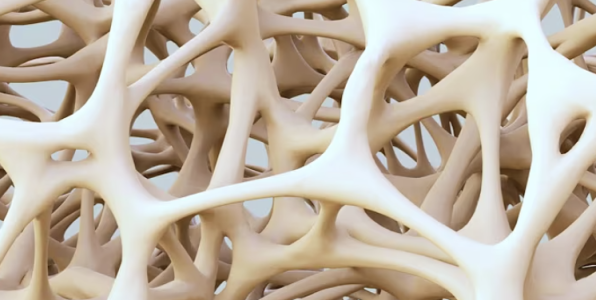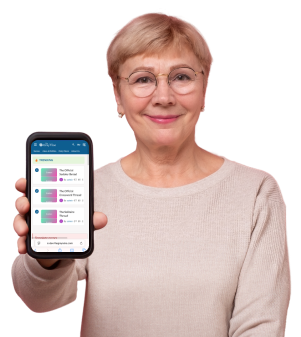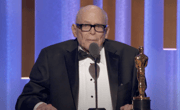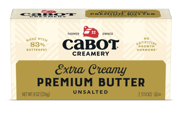Can you reverse osteoporosis? The surprising truth about stronger bones after 60
- Replies 0
As we age, our bones quietly bear the weight of every step, every stumble, and every story we've lived.
For many over 60, osteoporosis isn't just a medical term—it’s a looming concern, a threat to independence, mobility, and everyday comfort.
But is the damage set in stone? Or can this bone-thinning condition be reversed, or at least slowed? The answer may surprise you—and inspire action.
And while the condition can remain silent for years, its impact can be life-changing in an instant.
As Queen Camilla once shared, watching her mother suffer from osteoporosis was a heartbreaking experience: “She lost about eight inches in height and became so bent that she was unable to digest her food properly… I believe that the quality of her life became so dismal… that she just gave up the fight.”

A low BMI, smoking, heavy drinking, and conditions like rheumatoid arthritis can all tip the scales.
Still, as bleak as the outlook may seem, there’s a bright side: lifestyle choices matter. A lot.
According to the Royal Osteoporosis Society (ROS), “There are many other vitamins, minerals and nutrients that are vital to help your bones stay healthy and strong.”
The good news? A balanced, colorful diet will likely cover your bases. And if you live in a place with low sun exposure, a vitamin D supplement might be your best friend.
That includes walking, stair climbing, running, jumping rope, and lifting weights.
And don’t worry, even if you’ve already been diagnosed, you don’t have to sit this one out.
Low-impact options like tai chi, yoga, and Pilates can help improve balance and coordination—critical for fall prevention.
Trainer Tara LaFerrara breaks it down: “Women, especially post-menopause, face a higher risk of osteoporosis due to hormonal changes… It’s even more important to prioritize lifting heavy, eating enough protein and calcium, and getting vitamin D.”
It factors in age, sex, weight, lifestyle, and family history to calculate your fracture risk. If needed, you may be referred for a Dexa scan, which uses low-level X-rays to measure bone density.
And if you're wondering what that feels like, one man described it like this: “It’s like being a sheet of A4 in a flatbed scanner… completely painless.” His scan results? “Bone density is above the upper limit of normal for age at all sites.”
One woman reported that after eight years on bisphosphonates and two and a half years of running, her scan showed “a significant improvement,” which she attributed to the exercise.
Another said: “My osteoporosis has completely reversed itself.”
Still, experts advise caution. Sarah Leyland of the ROS explains, “There does seem to be some new evidence coming out… but it’s quite early research… So we talk about it as complementary.”
If you're worried about bone loss, the path forward starts with small, daily decisions.
Exercise won’t cure osteoporosis alone—but it can support medication, improve quality of life, and help protect you from fractures in the first place.
 Have you or someone you love been diagnosed with osteoporosis? What’s helped you feel stronger, safer, or more in control? Share your story with The GrayVine community in the comments below. Your voice could be the inspiration someone else needs to get moving—literally and figuratively.
Have you or someone you love been diagnosed with osteoporosis? What’s helped you feel stronger, safer, or more in control? Share your story with The GrayVine community in the comments below. Your voice could be the inspiration someone else needs to get moving—literally and figuratively.
Read more:
For many over 60, osteoporosis isn't just a medical term—it’s a looming concern, a threat to independence, mobility, and everyday comfort.
But is the damage set in stone? Or can this bone-thinning condition be reversed, or at least slowed? The answer may surprise you—and inspire action.
The Truth About Brittle Bones
Osteoporosis affects around millions of people, with one in two women and one in five men over 50 experiencing fractures as a result.And while the condition can remain silent for years, its impact can be life-changing in an instant.
As Queen Camilla once shared, watching her mother suffer from osteoporosis was a heartbreaking experience: “She lost about eight inches in height and became so bent that she was unable to digest her food properly… I believe that the quality of her life became so dismal… that she just gave up the fight.”

One in two women and one in five men over 50 experience fractures as a result of osteoporosis. Image source: NIH NIAMS / YouTube
Are You at Risk?
The odds aren’t equal for everyone. Women—particularly post-menopausal—are at higher risk, thanks to hormonal changes that accelerate bone loss.A low BMI, smoking, heavy drinking, and conditions like rheumatoid arthritis can all tip the scales.
Still, as bleak as the outlook may seem, there’s a bright side: lifestyle choices matter. A lot.
Step One: Nutrition That Builds Bone
The classic combo of calcium and vitamin D still stands tall. But don’t stop there.According to the Royal Osteoporosis Society (ROS), “There are many other vitamins, minerals and nutrients that are vital to help your bones stay healthy and strong.”
The good news? A balanced, colorful diet will likely cover your bases. And if you live in a place with low sun exposure, a vitamin D supplement might be your best friend.
Step Two: Exercise—Your Body’s Best Defense
Contrary to old-school thinking, impact and strength-based exercises are essential—not harmful—for aging bones.That includes walking, stair climbing, running, jumping rope, and lifting weights.
And don’t worry, even if you’ve already been diagnosed, you don’t have to sit this one out.
Low-impact options like tai chi, yoga, and Pilates can help improve balance and coordination—critical for fall prevention.
Trainer Tara LaFerrara breaks it down: “Women, especially post-menopause, face a higher risk of osteoporosis due to hormonal changes… It’s even more important to prioritize lifting heavy, eating enough protein and calcium, and getting vitamin D.”
Step Three: Know Your Numbers
Before you panic—or relax—get tested. A FRAX questionnaire is often the first step.It factors in age, sex, weight, lifestyle, and family history to calculate your fracture risk. If needed, you may be referred for a Dexa scan, which uses low-level X-rays to measure bone density.
And if you're wondering what that feels like, one man described it like this: “It’s like being a sheet of A4 in a flatbed scanner… completely painless.” His scan results? “Bone density is above the upper limit of normal for age at all sites.”
Can You Really Reverse Osteoporosis?
Some individuals have seen improvements—even reversals—in bone density through resistance training and medication.One woman reported that after eight years on bisphosphonates and two and a half years of running, her scan showed “a significant improvement,” which she attributed to the exercise.
Another said: “My osteoporosis has completely reversed itself.”
Still, experts advise caution. Sarah Leyland of the ROS explains, “There does seem to be some new evidence coming out… but it’s quite early research… So we talk about it as complementary.”
If you're worried about bone loss, the path forward starts with small, daily decisions.
Exercise won’t cure osteoporosis alone—but it can support medication, improve quality of life, and help protect you from fractures in the first place.
Key Takeaways
- Osteoporosis affects millions and increases the likelihood of fractures, especially in older populations.
- Lifestyle changes such as diet rich in calcium and vitamin D, along with weight-bearing exercises, can improve bone health and potentially help prevent osteoporosis.
- Medications and treatments like bisphosphonates and HRT can slow bone loss and strengthen bones in those with osteoporosis.
- Exercise may not completely reverse bone loss in those already at high risk, but is considered complementary to medication in managing and improving bone health.
Read more:






